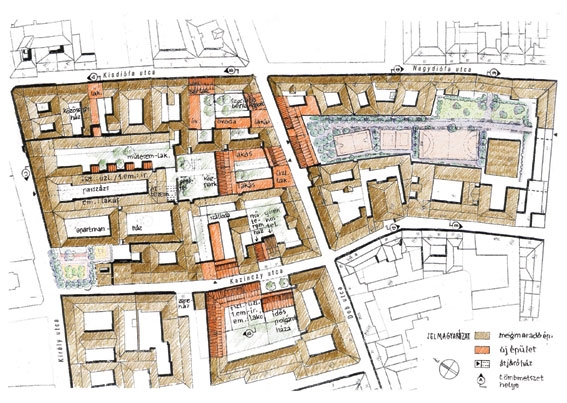Plan
Jewish District of Pest
Text: Julianna Szab├│ PhD

Part of the plan made by the ├ōv├Īs! Association,
design: Anna Perczel, ├üd├Īm Magyar, Kat├│ Sz├Īnt├│, J├Īnos Lad├Īnyi, Vir├Īg Bencze-Kov├Īcs
The history of the old Jewish district of Pest had originally been a story of success: Jews tolerated outside the city walls had an urban quarter built rapidly by the best architects of Hungarian Neo-Classicism, including the most important artery for trade in the capital and the largest synagogue of Central Europe. However, the history of the Jewish quarter is also a sorrowful one. It is one of the densest urban fabrics exposed to speculations with needy living conditions preserving the poverty of the Jews, with the attempt of modernization embodied in the aborted concept of Mad├Īch Avenue, with the memory of the ghetto, with empty and ruinous synagogues because of the lack of religious and communal cohesion, with the fiasco of rehabilitating block No. 15, with town-dwellers ageing, sinking into poverty and rapidly decreasing in number since the change of the political system and with suffocating motor traffic and parking facilities. The assessment of the latest developments is not clear yet. Houses of the Jewish quarter have been and are being replaced steadily since the beginning of the new millennium with fin-de-si├®cle architecture falling victim to some mediocre speculations taking place at the turn of the millennium in a spectacular way.